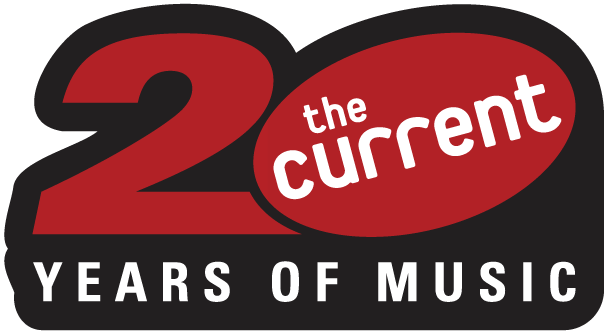The Current's Guitar Collection: Andrew Marlin and Emily Frantz of Mandolin Orange, Pre-War Guitars Company, Herringbone Dreadnought

by Luke Taylor
February 25, 2019
Mandolin Orange visited The Current studio while on the first leg of their ambitious tour in support of their new album, Tides of a Teardrop.
During the time between their studio session and their sold-out gig at First Avenue in Minneapolis, Andrew Marlin and Emily Frantz of Mandolin Orange took time to talk about the guitar they play, a Pre-War Guitars Company Herringbone dreadnought. Here's what they had to say:
What can you tell us about this guitar?
ANDREW MARLIN: For the past 10 or 11 years, we've known these guys, Wes Lambe and Ben Maschal, down in Hillsborough, North Carolina. They've been building guitars and doing a lot of repair work for us.
And then I think it was about three years ago, they decided to start building dreadnought guitars modeled after old '30s guitars, especially Martin dreadnoughts and also the early Gibson dreadnoughts.
We asked them to build us a D-28 model, which is rosewood back and sides, herringbone trim, and I always liked sunburst guitars, so they did a sunburst that I swear, one glance at it, you would think it's an old 1936 sunburst D-28.
In the past three years, they've gotten guitars in the hands of folks like David Grier, Molly Tuttle …
EMILY FRANTZ: Tommy Emmanuel.
MARLIN: I feel like everybody's playing one, but those are some pretty good names to throw out there.
What do you two like about the tone of the guitar?
FRANTZ: One of the cool things that they do is torrefy the top. I don't totally understand the process, but it essentially burns it and dries it out.
MARLIN: Yes, it ages the top in a way. You basically put it in a kiln with no oxygen, and so it crystallizes all these little inner workings of the wood, and the whole top is just working together to resonate in this beautiful way. From the very first time you string it up and hit a chord on it, it's ready to roll.
I think was actually a Scandinavian process — they started torrefying their deck wood because it makes less susceptible to bend and expand and contract with humidity. And so I think for that reason also, it makes the guitar a lot easier to travel with, because whether we're in 20 percent humidity or 80 percent humidity, that guitar really stays in tune and doesn't move a whole lot.
FRANTZ: The torrefying takes out so much of the years or decades of break-in time that you would have if they didn't do that.
MARLIN: But it's kind of cool because with the torrefaction, I would think that it would also limit how much it could also be played in, but this one has still continued to mellow so much, and the highs have become so much more brilliant. There's no harshness to the sound of it, no matter where you are on the fretboard. I think these guys have tapped into a very, very tone-full will that a lot of people only hope to achieve.
When you perform, the instrumentation varies depending on the song, so you two share the same guitar, correct?
FRANTZ: We both play that guitar. I think it's somewhat because it's the guitar that each of us would want to play if we were choosing one guitar, but also for practical reasons, we just travel with the one and share it.
MARLIN: I can't imagine wanting another guitar right now. It's scratching that itch for both of us, I think.
There are three primary instruments between the two of you — guitar, mandolin and violin — but when you're writing and arranging songs, which is your go-to instrument?
MARLIN: I do all the writing on the guitar. I think I've written maybe two lyrical tunes on the mandolin, and the rest have always been on the guitar. Because for me, I want that fullness of the chord and I want to be able to work on the grooves and maybe some different voicings, and I feel like the guitar, for songwriting, is just the place to do it.
FRANTZ: And I don't write the songs, I just jump in once Andrew's written them. The majority of the time, now that Andrew's playing so much mandolin, he writes the song on the guitar but then it ends up getting handed over to me. And so a lot of the time, initially, I'll be trying to re-create any of the little riffs or things that Andrew put into the song when he was writing it, but over time, naturally, the part I'm playing usually morphs a bit.
MARLIN: Emily's got a very fluid right hand — I think from playing fiddle so many years, it's very loose — and is able to achieve a lot of different grooves just with that one instrument, with the guitar. So it's kind of nice when we actually sit down to start arranging these tunes, how much she can change up the groove in these subtle ways that makes the songs come across as impactfully as possible.
External Links
Mandolin Orange - official site
Pre-War Guitars Company - official site



